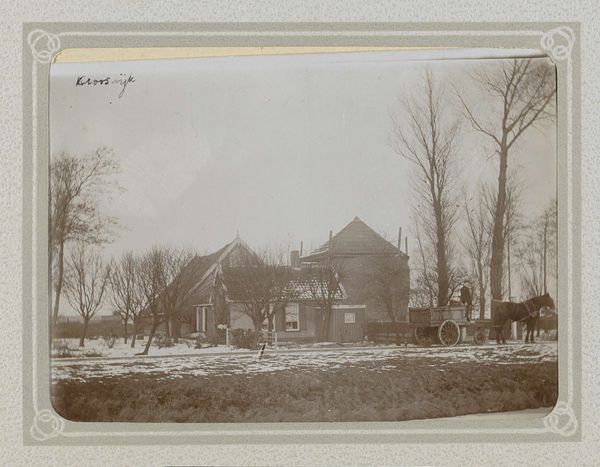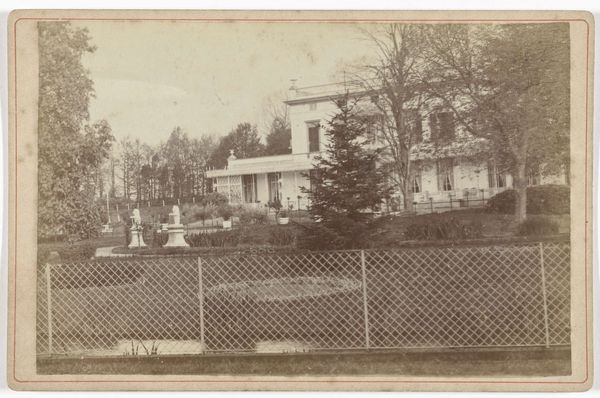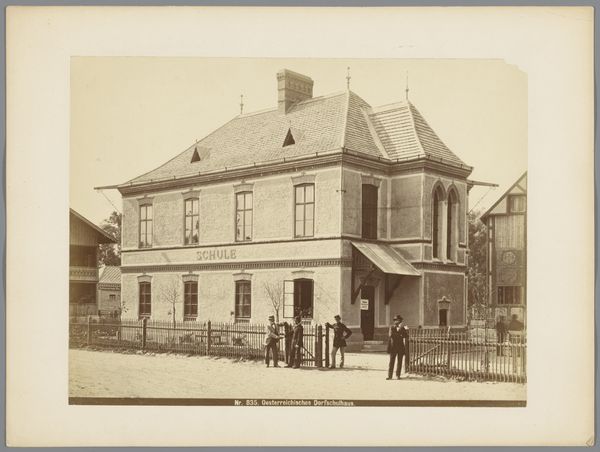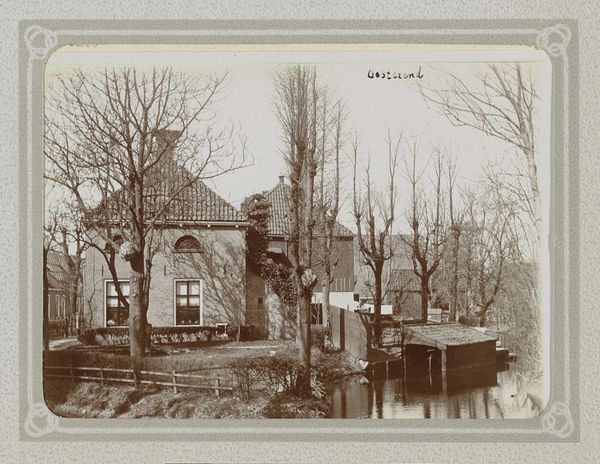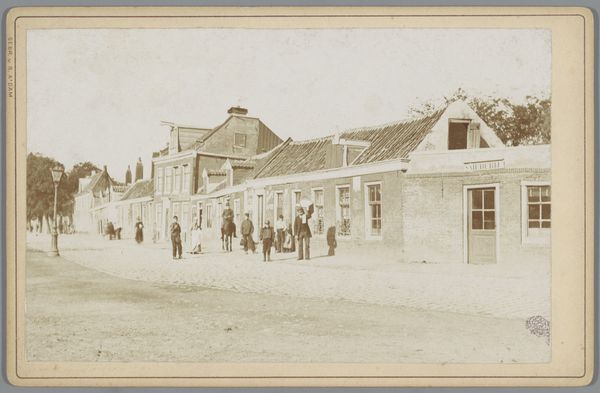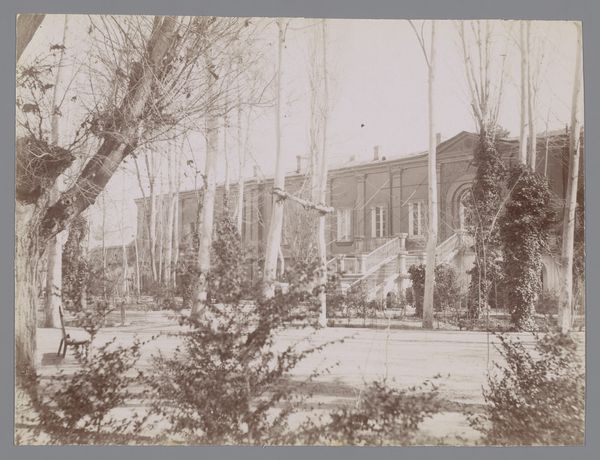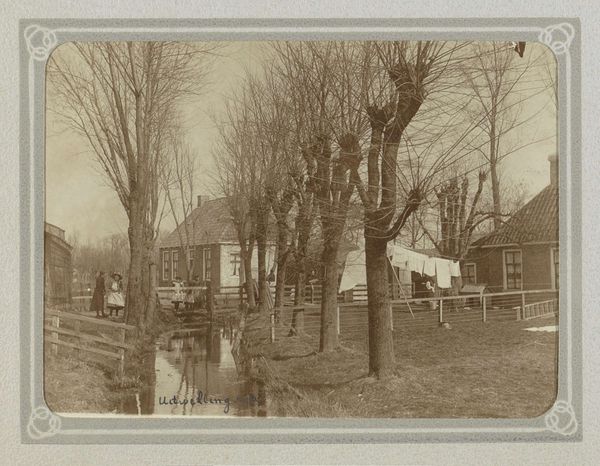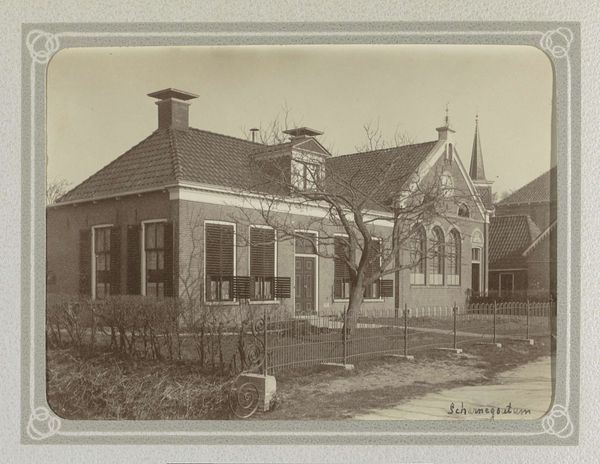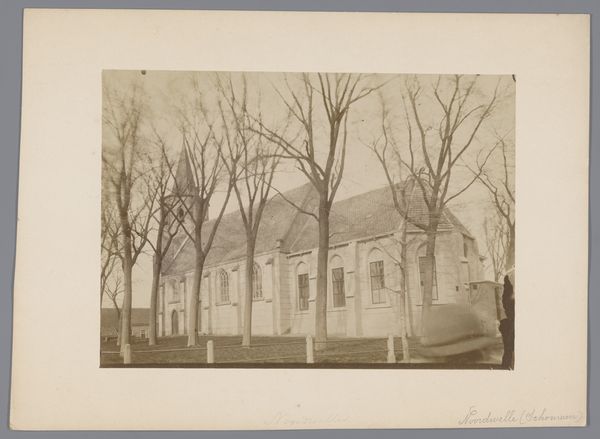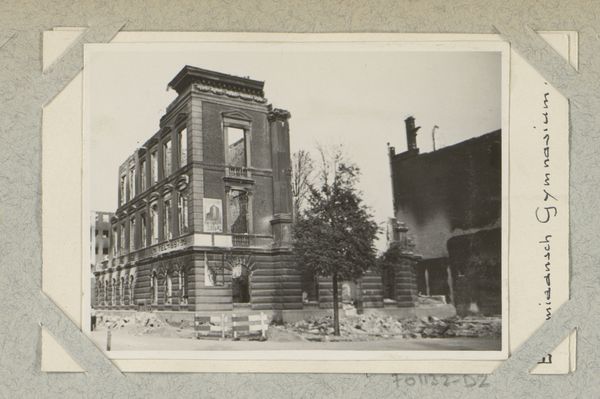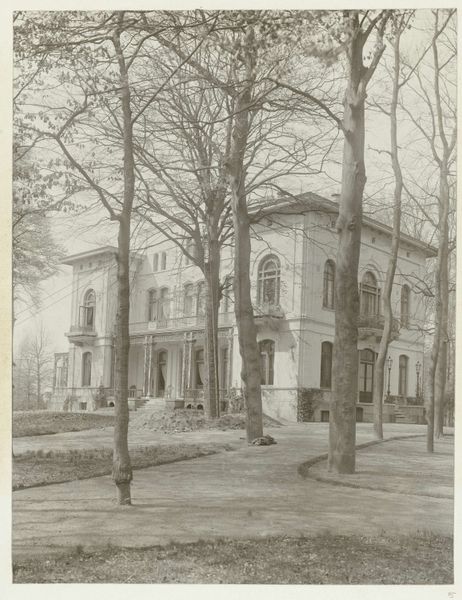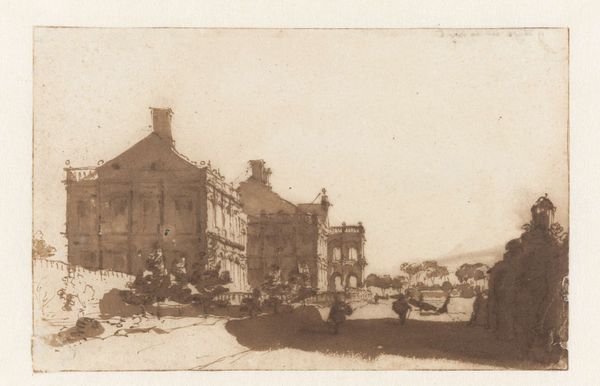
Volwassenen en kinderen bij spoorrails voor een huis aan de Bergweg in Rotterdam c. 1905 - 1907
0:00
0:00
photography, gelatin-silver-print
#
neoclassicism
#
pictorialism
#
landscape
#
street-photography
#
photography
#
gelatin-silver-print
#
cityscape
#
genre-painting
#
realism
Dimensions: height 81 mm, width 110 mm
Copyright: Rijks Museum: Open Domain
Curator: This gelatin silver print, taken between 1905 and 1907, is titled "Adults and Children by Railroad Tracks in Front of a House on Bergweg in Rotterdam" by Folkert Idzes de Jong. Editor: It’s captivating. The muted tones evoke a strong sense of place and time, that industrializing era. It seems like the figures are caught in this strange limbo between progress and the everyday, doesn’t it? Curator: Yes, the image is so evocative. De Jong was actively documenting Rotterdam, specifically interested in recording scenes from everyday life amidst rapid urbanization. The inclusion of both children and adults gathered by the railroad tracks creates this wonderful tension. It almost seems as if the tracks themselves are dividing two distinct spheres. Editor: Exactly! Look at those figures: they’re standing right on the tracks, literally on the edge. It makes you think about class and community at that specific moment in Rotterdam’s evolution. Who benefits from this “progress” and who is displaced or left behind? There is a quiet disquiet simmering in the photograph. Curator: What I find interesting is the formal element in play. Notice how the house provides an ornate, almost neoclassical backdrop? Juxtapose that with the industrial grit of the tracks and the raw earth in the foreground. It sets up a visual commentary on the city itself: beauty intertwined with harsh realities. This tension between the elegant and the industrial would have been especially poignant in early 20th century Rotterdam. Editor: I agree. Also, I see a connection to contemporary ideas around surveillance and public space. Photography during this era often framed urban inhabitants as subjects to be observed and managed. Here we might ask who holds the power and perspective within this visual field? The photographer? Or perhaps those individuals daring to occupy the track? Curator: Well, considering photography's developing role during the time, de Jong's composition might be both reflective and unintentionally representative of society's views. Perhaps a critical approach towards art production during moments of immense cultural changes would prove revealing. Editor: Agreed. This image offers not only a portrait of Rotterdam but also encourages vital inquiries related to societal structure during a turning point of human society.
Comments
No comments
Be the first to comment and join the conversation on the ultimate creative platform.
